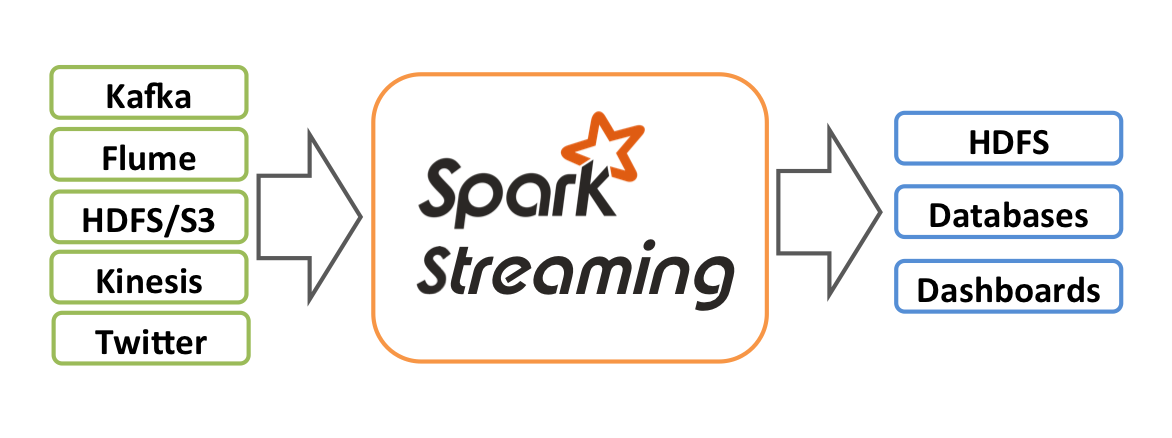Overview
Spark Streaming is an extension of the core Spark API that enables
scalable, high-throughput, fault-tolerant stream processing of live data
streams. Data can be ingested from many sources like Kafka, Flume,
Twitter, ZeroMQ, Kinesis or TCP sockets can be processed using complex
algorithms expressed with high-level functions like map, reduce,
join and window. Finally, processed data can be pushed out to
filesystems, databases, and live dashboards. In fact, you can apply
Spark’s machine learning and graph
processing algorithms on data streams.

Internally, it works as follows. Spark Streaming receives live input data streams and divides the data into batches, which are then processed by the Spark engine to generate the final stream of results in batches.

Spark Streaming provides a high-level abstraction called discretized stream or DStream, which represents a continuous stream of data. DStreams can be created either from input data streams from sources such as Kafka, Flume, and Kinesis, or by applying high-level operations on other DStreams. Internally, a DStream is represented as a sequence of RDDs.
This guide shows you how to start writing Spark Streaming programs with DStreams. You can write Spark Streaming programs in Scala, Java or Python (introduced in Spark 1.2), all of which are presented in this guide. You will find tabs throughout this guide that let you choose between code snippets of different languages.
Note: Python API for Spark Streaming has been introduced in Spark 1.2. It has all the DStream transformations and almost all the output operations available in Scala and Java interfaces. However, it has only support for basic sources like text files and text data over sockets. APIs for additional sources, like Kafka and Flume, will be available in the future. Further information about available features in the Python API are mentioned throughout this document; look out for the tag Python API.